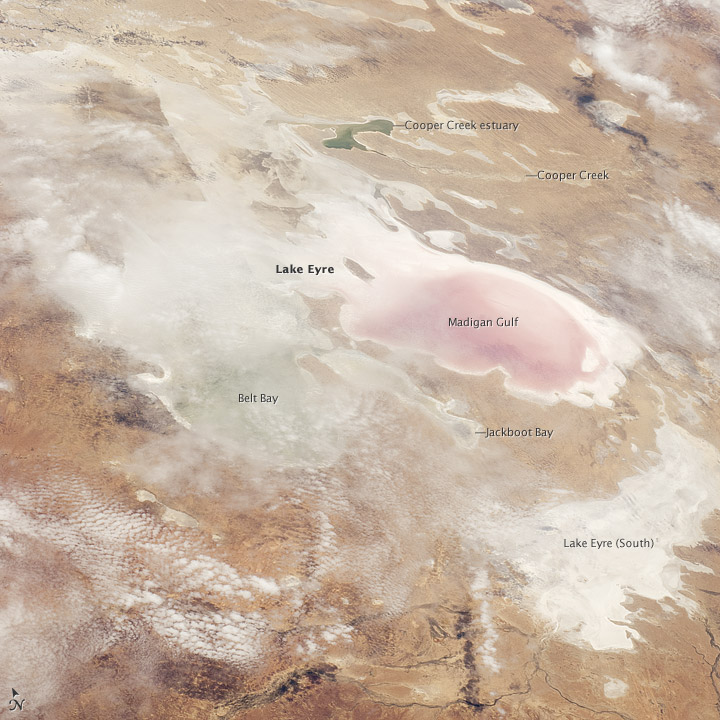Kati Thanda-Lake Eyre is technically Australia’s biggest lake, but you wouldn’t know it most of the time – it rarely has water in it. But, thanks to record-breaking fall rains, this expanse has now transformed from salt pan to inland oasis, and though it will eventually disappear once again, it’s set to turn a delicious peachy pink as it does.
This slow, watery game of peekaboo makes Kati Thanda-Lake Eyre what’s known as an ephemeral lake, meaning it only contains water temporarily. According to Guinness World Records, not only is it the largest lake of this kind in Australia, but also in the whole world.
The story of how the 9,500 square-kilometer lake would come to fill up again began back in March of this year, Queensland was hit with a bout of extreme rainfall. The heavy rains flooded the rivers that flow toward Kati Thanda-Lake Eyre, and that water gradually swept through the outback before reaching the lake at the beginning of May.

The lake as it filled up, from April 29 to June 12, 2025.
Image credit: Wanmei Liang, using MODIS data from NASA EOSDIS LANCE and GIBS/Worldview
Will it fill to capacity? It would be a rare treat if so, having only happened three times in the last 160 years, according to South Australia’s Department for Environment and Water, although there have been partial fills more recently. The last time the lake was filled to capacity was in 1974 and whether or not we’re about to see a repeat of that is a question that’s garnered mixed opinions – and many bets – between locals.
National Parks and Wildlife Service District Ranger Travis Gotch told ABC News he didn’t believe this year’s lake would reach the same heights. “My gut feel is it will be roughly around the same level as the 2010 floods, which will sort of put it up, you know, a couple of metres deep,” he said. “We’ll have water in the lake for six to 12 months, depending on how hot the summer is.”
Regardless of how full it becomes, the very nature of the lake means that the water will eventually leave again – but not by flowing out. Kati Thanda-Lake Eyre is endorheic, meaning water flows into, but not out of it. Instead, it evaporates – and as it does so, the color of the lake can begin to shift.

Lookin’ peachy.
Image credit: ISS Crew Earth Observations experiment and Image Science & Analysis Laboratory, Johnson Space Center
The disappearance of the water leads to an increase in the salinity of the remaining water, which is great news for the salt-loving microorganisms that live in the lake, which begin to thrive. It’s these microorganisms that appear to be behind the lake’s transformation into a spectacular peachy pink, the color caused by the pink-red pigments found in their cell membrane.
Microscopic life can cause a whole rainbow of colors to form in water, quite literally when it comes to Yellowstone National Park’s Grand Prismatic Spring, for example. It can make for an amazing sight – but when colorful microorganisms appear in waters that support millions of people, they can soon become more problematic than pretty.
Source Link: World’s Largest Ephemeral Lake Set To Turn Iconic Peachy Pink After Extreme Flooding